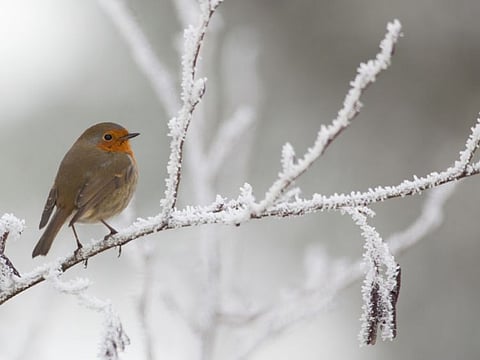Off the cuff: A seed in darkest winter
Who could fail to love a season so beautiful and so fragile?

For most of my adult life, I wore a red coat when the weather got cold. It started when I was 22 and searching for new outerwear during my first winter in Philadelphia. (It turned out to be my only winter in Philadelphia.) I kept being drawn to a bright red peacoat in a mail-order catalogue. Perhaps it reminded me of home in Alabama, the colour of the ubiquitous cardinals perched among green pine needles.
My block in urban Philadelphia offered no such reminders of home — the birds outside my grad-school apartment were pigeons and house sparrows and starlings, grey or brown or black. I loved that red peacoat. The Philly skies were steely and low, continually threatening snow or a bitter rain, and I felt happier swaddled in a cheerful bit of living colour while the world turned itself into a 19th-century engraving all around me.
But even before I left Alabama, winter was my least favourite season, a time when songbirds mostly cease their singing and small, furtive creatures find a secret place to sleep all day. Winter is the season of coats, the season of shoes. In summer I was a barefoot child in the emerald woods. In winter I sat indoors and watched it rain.
The songbirds, mostly absent during the extended warm spell, once again swarmed our feeders. With insects no longer flying, even the bluebirds settled for sunflower hearts until I could get to the store for mealwormsMargaret Renkl
Wintertime blues
For decades afterward, I stuck with that redcoat cure for the wintertime blues, but four years ago the zipper broke on my latest red coat, and I couldn’t find a replacement I liked. Turns out it didn’t matter. Somewhere along the way I had stopped hating winter.
I fell in love with the way the peeling bark and bare limbs of the sycamore reveal a ghost tree reaching for the sky, and the way the faded beech leaves cling to their branches and rustle in the wind like castanets. A shivering beech tree in a damp winter forest gives off its own light in the same way that dogwood blossoms in springtime look like tiny ground-borne suns.
I fell in love with the great-horned owl’s haunting winter courtship song and the crows’ constant, raucous conversation. One of my chief wintertime pleasures is to leave whole peanuts out for the squirrels to hide in their secret caches under the leaf litter and in the forks of trees — and then to watch the wily blue jays digging them up and carrying them away to their own hidey-holes. I have come to welcome the grey, lowering skies because they mean I will have the trails at the park to myself.
Blooming daffodils
Who could fail to love a season so beautiful and so fragile? For far too long most of us didn’t understand how fragile it truly is. But on Christmas Day it was 70 degrees in Nashville, and two weeks later, the daffodils were blooming. It’s always a mistake to confuse weather for climate, but all five of the five warmest years on record have occurred since 2015, and last year was the 43rd year in a row in which temperatures across the planet measured above average. There can be no reasonable argument about what is happening here in the Anthropocene.
Nevertheless, the winter of old returned last week to pay a visit. The songbirds, mostly absent during the extended warm spell, once again swarmed our feeders. With insects no longer flying, even the bluebirds settled for sunflower hearts until I could get to the store for mealworms. When I walked the dog on a night with temperatures in the teens, my eyes kept tearing up and the tears kept freezing to the inside of my glasses.
That’s when I remembered the seed catalogues. I love to sit under a blanket on a cold night and thumb through page after page of blooming flowers. The loss of a 70-year-old maple tree last summer left a new sunny place in our yard, and there’s room now for a whole new pollinator bed to feed our local bees and butterflies.
Also Read: Off the cuff: Girl on a red dirt road
Also Read: Let’s hear it for the average child
I picked out some promising seed varieties, and then I looked them all up to be sure they were native to Middle Tennessee. By the time I’d come up with a plan for the new flower bed that included plants of varying heights and colours and blooming times, plants that are also compatible with both the specific light and soil conditions of our yard the specific needs of native insects, I felt as though I’d passed some kind of test.
I was so absorbed by the task of planning for spring that I completely forgot it was winter. I was imagining the scent of turned earth, the feel of damp soil. I was thinking about how nature always renews itself, given even half a chance.
I was remembering my favourite part of planting: the moment when the seedling, as fragile as any lace-winged insect or hollow-boned nestling, somehow shoves the clods of earth aside and makes its way upward and outward. The way it somehow always finds the light.
—New York Times News Service
Margaret Renkl is a contributing opinion writer who covers flora, fauna, politics and culture in the American South.
Sign up for the Daily Briefing
Get the latest news and updates straight to your inbox



